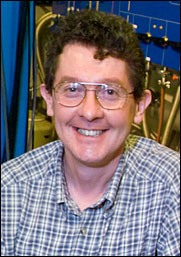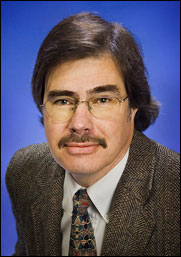| Posted: July 14, 2009 |
Brookhaven and Stanford physicists share Onnes Prize for superconductivity experiments |
|
(Nanowerk News) J.C. Seamus Davis and John Tranquada, physicists at the U.S. Department of Energy’s Brookhaven National Laboratory, along with Aharon Kapitulnik of Stanford University, have been named the recipients of the 2009 Heike Kamerlingh Onnes Prize for outstanding superconductivity experiments. Named after the winner of the 1913 Nobel Prize in physics for the discovery of superconductivity and related research, the Onnes Prize is awarded every three years for outstanding experiments that illuminate the nature of superconductivity – the disappearance of electrical resistance in certain materials at specific temperatures, mostly in the range of nearly absolute zero (minus 459.67 degrees Fahrenheit).
|
|
The prize will be presented at the Ninth International Conference on Materials and Mechanisms of Superconductivity on September 9, in Tokyo. The recipients will each receive a diploma and share a $5,000 award sponsored by Elsevier, a publisher of academic journals and books.
|
 |
| J.C. Seamus Davis
|
|
J.C. Seamus Davis was cited “for pushing the limits of spectroscopic imaging scanning tunneling microscopy at low temperatures and applying it to pioneering studies of the cuprate high-temperature superconductors.”
|
|
Davis built a scanning tunneling microscope that can resolve details smaller than the diameter of an atom, which he uses to study the movement of electrons in superconducting materials. His insights on how the behavior of electrons in high-temperature superconductors affects the transition temperature – the temperature at which a material loses its electrical resistance – may lead to the discovery of new superconducting materials that are suitable for applications such as zero-loss energy generation and transmission systems.
|
|
“I am delighted and honored to receive this award,” Davis said. “I will continue to improve and expand the capabilities of the instrument I built to elucidate the properties of superconductivity.”
|
|
Davis earned a B.Sc. in physics from the National University of Ireland in 1983 and a Ph.D. in physics from the University of California, Berkeley (UC Berkeley), in 1989. After holding a postdoctoral position at UC Berkeley, he joined the faculty of the university in 1993. In addition, he became a faculty physicist at Lawrence Berkeley National Laboratory (LBNL) in 1998. In 2003, he moved to Cornell University, where he is currently the J.G. White Distinguished Professor of Physical Sciences. In 2007, he also joined Brookhaven Lab as a senior physicist, and he became the SUPA Distinguished Research Professor of Physics at the University of St. Andrews in Scotland. In 2009, Davis was named the Director of the U.S. Department of Energy’s Center for Emergent Superconductivity based at Brookhaven Lab, and he became a visiting professor at the University of British Columbia, Canada.
|
 |
| John Tranquada
|
|
A Fellow of the American Physical Society and the Institute of Physics, Davis has won numerous awards for his work, including the National Science Foundation’s Young Investigator Award and several fellowships. He received the Miller Research Professorship at UC Berkeley in 1997, the Outstanding Performance Award from LBNL in 2001, and the Fritz London Memorial Prize in 2005.
|
|
John Tranquada was cited “for pioneering neutron scattering experiments leading to the discovery of the stripe phases in the cuprate high-temperature superconductors.”
|
|
In the 1990s, Tranquada and his colleagues discovered that high-temperature superconductors have a tendency toward charge segregation, which enables the coexistence of conducting and insulating properties. This work indicates that the electronic structure of high-temperature superconductors consists of fluctuating strings of charge, known as stripes, a concept that is increasingly influencing the current models of high-temperature superconductors.
|
|
|
|
“It is a great honor to receive this prize and share it with such excellent colleagues,” Tranquada said. “My work has built on the contributions of many researchers at Brookhaven, so this honor is a tribute to them all.”
|
|
John Tranquada received a B.A. in physics from Pomona College in 1977 and a Ph.D. in physics from the University of Washington in 1983. He did postdoctoral research at Brookhaven’s National Synchrotron Light Source from 1983 to 1986, officially joining Brookhaven as an assistant physicist in 1986. He worked his way through the ranks to become leader of Brookhaven’s Neutron Scattering Group in 1998, and senior physicist in 2000.
|
|
A Fellow of the American Physical Society and the American Association for the Advancement of Science, Tranquada received a U.S. Department of Energy Award for Outstanding Scientific Accomplishment in Solid State Physics in 1988, Brookhaven Lab’s Research & Development Award in 1997, and the Sustained Research Prize from the Neutron Scattering Society of America in 2006.
|


